Investigating Jack the Ripper
In the autumn of 1888 in the east end of London a horror that would seem pure fiction occurred. On the cobble streets of Whitechapel, a devious man took the lives of five women and terrorized the citizens of this community. This monster of a man is known as the infamous Jack the Ripper. A man whose true identity, eluded police then and now. With all the hype and embellishments to the story, many are unaware or ill informed of the truth and horror, which is why a factual investigation in necessary. To better understand what happened in 1888, the victims and the investigation, a detailed examination is needed. Using eye witness accounts, autopsy reports, and police correspondence, a true to the time account can be collaborated. With the documentation made during the investigation a better insight can be achieved to the events starting on August 31st 1888.
The widely accepted beginning of these heinous crimes, started with the death of Mary Ann Nichols. Nichols, age forty-four, was an extremely poor alcoholic prostitute, who was murdered on August 31st 1888. She was last seen living at 2:38am, her body was found on Bucks Row at 3:40 am. The body was discovered by two men who were on their way to work, both agreed to tell the first constable they saw. Shortly after the two men left the scene Police officer Neil found the body. When reporting in Neil claimed he passed the location while on patrol no more than thirty minutes earlier and there was no body, or persons in the area. A night watchman on duty that admitted to falling asleep claimed to be awake during the hours of three and four, during that time he was approached by a man who informed him of a murder. With no solid leads and daylight approaching the body was sent to autopsy.
The autopsy started with an external exam, the coroner noted that Nichols was missing five teeth, had bruising to the face and clear evidence of strangulation. Approximately one inch below the jaw line he found a cut starting under the left ear and proceeding to four inches in length. The large veins on both sides of the neck where severed. Several large, violent and jagged incisions where found on the abdomen, the majority were horizontal going left to right. The coroner at this point believes all cuts to the body where all inflicted by the same instrument. Nichols body was identified by her father and ex-husband (Jack). A week passes before Jack the Ripper claims the next victim.
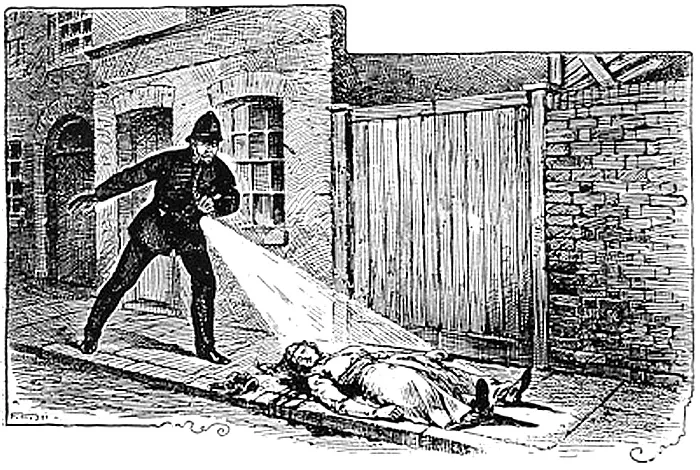 At 29 Hanbury Street the next victim was found, Annie Chapman, who was a 47-year-old prostitute. She was last seen by Elizabeth Long around 5:30 am with a man. Not long after Albert Cadosh walked into his backyard, at 27 Hanbury Street, he heard a muffled cry and a thud against a fence. Chapman’s body was discovered at 6am and the Commercial Street Police Station was alerted upon discovery. The investigation is now moved to the autopsy table.
At 29 Hanbury Street the next victim was found, Annie Chapman, who was a 47-year-old prostitute. She was last seen by Elizabeth Long around 5:30 am with a man. Not long after Albert Cadosh walked into his backyard, at 27 Hanbury Street, he heard a muffled cry and a thud against a fence. Chapman’s body was discovered at 6am and the Commercial Street Police Station was alerted upon discovery. The investigation is now moved to the autopsy table.
Upon the start of the autopsy the external exam was preformed, like Nichols, there was bruising to the face, a cut to the throat and evidence of strangulation. A handkerchief was around the neck of the victim. Chapman’s abdomen was splayed open, her intestines draped over her shoulders and her pelvic organs removed and missing. The coroner noted brain and lung tissues damage, which seemed to be caused by tuberculosis and possibly syphilis. Based on the damage to the body the coroner determines the weapon to be about five to six inches in length, possibly longer, extremely sharp and yielded with a knowledge of anatomy. Twenty-two days later, the body of Elizabeth Stride was discovered.
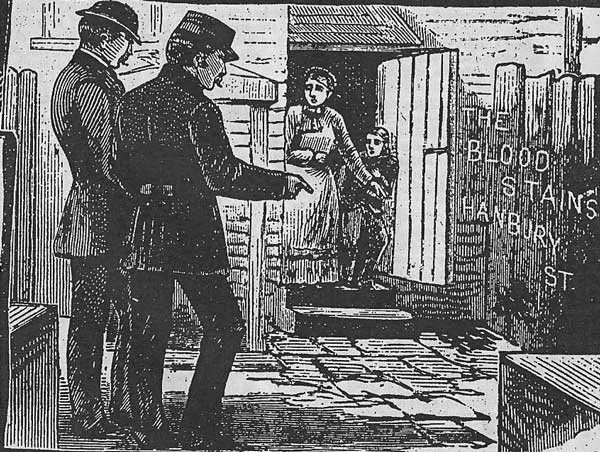 On September 30th on Berners Street, in an ally way next to the International Workingmen’s Educational Club, Elizabeth Stride was murdered. At 12:55 in the morning a man, Diemshultz, was returning to the club. When he passed the alley way, his horse stopped short and lurched to the left opposite of the alley. Diemshultz went to investigate what spooked his horse, he lit a match and discovered the body of Stride, and he proceeded to the club and informed the patrons of his find. Within moments the body was enveloped with a crowd of people. When police arrived on the scene, they immediately search the premises and question the bystanders, they turn up no evidence. Diemshultz informs the police that he believes that he caused the murderer to flee when he walked into the alley way. When the body is at autopsy, the coroner is informed that the body was still warm at the crime scene.
On September 30th on Berners Street, in an ally way next to the International Workingmen’s Educational Club, Elizabeth Stride was murdered. At 12:55 in the morning a man, Diemshultz, was returning to the club. When he passed the alley way, his horse stopped short and lurched to the left opposite of the alley. Diemshultz went to investigate what spooked his horse, he lit a match and discovered the body of Stride, and he proceeded to the club and informed the patrons of his find. Within moments the body was enveloped with a crowd of people. When police arrived on the scene, they immediately search the premises and question the bystanders, they turn up no evidence. Diemshultz informs the police that he believes that he caused the murderer to flee when he walked into the alley way. When the body is at autopsy, the coroner is informed that the body was still warm at the crime scene.
The throat was cut deeply and shows evidence of strangulation like the previous victims, there is also a handkerchief around the neck. The only traumatic injury found was the gash to the neck which severed the carotid artery. Comparing Stride’s body to the previous victims adds to the legitimacy of Diemshultz’s theory that the murder was interrupted by his presents. Only a few hours pass before the next victim is discovered.

On September 8th Catherine Eddows was arrested for drunkenness, when she was deemed sober the police released her around one in the morning. Eddows was a forty-six-year-old prostitute, whom was considered well educated and a heavy drinker. Eddows was also suffering from a form of kidney disease. At 1:30 am three men last saw Eddows while departing a pub, she was speaking to a man. No more than thirty minutes later her body was discovered by a police officer. The crime scene before him was considerably more gruesome than any of the previous murders. Her body was still warm at the scene, suggesting that the murder took place within a half hour. Later that morning, the victim’s remains where examined.
Eddows was maliciously attacked; her face was mutilated with cuts and bruises. Her intestines where draped over her shoulders and one of her ear was cut almost completely off. The throat was severed almost to the point of decapitation. Her reproductive organs and left kidney where skillfully removed, the organs were not present at autopsy or found at the crime scene. The coroner speculates that the instrument in question had to be a long and sharp, wielded by a person with knowledge of the internal organs and that there was a single assailant. The next several weeks were uneventful, that is until November 9th.

On November 9th the young May Jane Kelly, at twenty-five years of age, was murdered. She was last heard by her neighbors around four in the morning. Later that morning, around 10:45 am, a rent collector came to her home, when there was no answer he peeked in the window and saw her body. He immediately informed police. When the police arrived at 13 Millers Court they were greeted by the most horrific crime scene. The once pretty Mary Jane Kelly was disemboweled, her remains where gathered and sent to autopsy.
Mary Kelly was found on her bed, her face was unrecognizable gouged, covered in slits and bruised. Her head rested on top of a pillow made of organs ad body parts, her bed decorated with her internal organs. Kelly’s body cavity was emptied, like a carcass at a butcher’s shop. Her heart was missing and not among the organs that where carefully placed around the body.
 With forensic science many years away, the techniques that the police could use to try and apprehend the killer was extremely limited, the only way to get a conviction was to catch the criminal in the act or to get a confession. On September 27th the “Dear Boss” letter was received, shortly followed by the “Saucy Jack” letter on October 1st. Using the letters as a vehicle to get the investigative ball rolling, they mass printed the handwritten letters, and distributed them to the citizens of Whitechapel in hopes the handwriting would be recognized. The writing samples gave no leads, and the police force grew concerned, now the department had to broaden they’re tactics.
With forensic science many years away, the techniques that the police could use to try and apprehend the killer was extremely limited, the only way to get a conviction was to catch the criminal in the act or to get a confession. On September 27th the “Dear Boss” letter was received, shortly followed by the “Saucy Jack” letter on October 1st. Using the letters as a vehicle to get the investigative ball rolling, they mass printed the handwritten letters, and distributed them to the citizens of Whitechapel in hopes the handwriting would be recognized. The writing samples gave no leads, and the police force grew concerned, now the department had to broaden they’re tactics.
 On October 9th Commissioner Charles Warren wrote to Commissioner James Fraser, requesting daily meetings in order to have more calibration on the case, to consult, to share suspect names and suggestions. On the same day Warren wrote to Henry Mathews, to suggest pardoning any of the perpetrators’ accomplices if they came forward with any relevant information leading to an arrest. On November 11th Thomas Gribton wrote to Thomas Blair with the suggestion to lure the Ripper by dressing a dozen police officers as women with light weapons and strategically placed back up. Trying to get the neighboring departments to work together was a challenge on its own, as well as giving new tactics a try. The police in this era had their own way of thinking and this played a factor in how they proceeded with the Ripper case.
On October 9th Commissioner Charles Warren wrote to Commissioner James Fraser, requesting daily meetings in order to have more calibration on the case, to consult, to share suspect names and suggestions. On the same day Warren wrote to Henry Mathews, to suggest pardoning any of the perpetrators’ accomplices if they came forward with any relevant information leading to an arrest. On November 11th Thomas Gribton wrote to Thomas Blair with the suggestion to lure the Ripper by dressing a dozen police officers as women with light weapons and strategically placed back up. Trying to get the neighboring departments to work together was a challenge on its own, as well as giving new tactics a try. The police in this era had their own way of thinking and this played a factor in how they proceeded with the Ripper case.
Foot police frequently canvassed Whitechapel and interviewed citizens, if there were any suspicions that person would be placed under arrest but released shortly after due to lack of evidence and multiple suspects . The Victorian Era mind set was a reason that may have attribute to why Jack the Ripper was never caught. Police had a flawed criminal profiling technique, it was based on classes meaning, the poorer the man the more devious the man. The only breakthrough of the time period took place in the later end of the century psychiatry became accepted and the justice system began to consider mental illness to criminals.
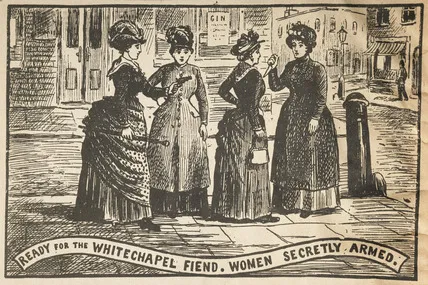 With the hysteria and hype of Jack the Ripper, many wanted their fifteen minutes and wrote hoax letters, bogging down the police while the killer ran loose. Two of the letters that came in gained creditability, the “Dear Boss” letter after the Eddows murder because as the letter stated a victim would lose an ear. The “From Hell” letter which was sent with a package, when the package was opened there was part of a kidney; it was in a jar preserved in alcohol. The kidney was examined and doctors confirmed that the kidney was extremely similar to the right kidney that remained in Eddow’s body, suffering the same damage of her stage of kidney disease. Most of the letters, as with much of the evidence, is either missing or damaged; any evidence now on file is either a copy or a photo of the original. With all the hoaxes a profile was made to narrow down the suspect pool.
A profile of Jack the Ripper was made during the man hunt, which only lead to dead ends. They based part of the profile on having medical knowledge and the focus was set on medical students, who have served time in an asylum. Using their system of class profiling they also investigated butchers and slaughter men. Also, with the close proximity of the crimes the investigators deduced he lived locally. With the days and times of the murders leading them to believe that the murderer was an unmarried man who had regular employment on weekdays, this would account for all the murders taking place on the weekends and early morning. As investigative techniques improved a new profile was made.
With the hysteria and hype of Jack the Ripper, many wanted their fifteen minutes and wrote hoax letters, bogging down the police while the killer ran loose. Two of the letters that came in gained creditability, the “Dear Boss” letter after the Eddows murder because as the letter stated a victim would lose an ear. The “From Hell” letter which was sent with a package, when the package was opened there was part of a kidney; it was in a jar preserved in alcohol. The kidney was examined and doctors confirmed that the kidney was extremely similar to the right kidney that remained in Eddow’s body, suffering the same damage of her stage of kidney disease. Most of the letters, as with much of the evidence, is either missing or damaged; any evidence now on file is either a copy or a photo of the original. With all the hoaxes a profile was made to narrow down the suspect pool.
A profile of Jack the Ripper was made during the man hunt, which only lead to dead ends. They based part of the profile on having medical knowledge and the focus was set on medical students, who have served time in an asylum. Using their system of class profiling they also investigated butchers and slaughter men. Also, with the close proximity of the crimes the investigators deduced he lived locally. With the days and times of the murders leading them to believe that the murderer was an unmarried man who had regular employment on weekdays, this would account for all the murders taking place on the weekends and early morning. As investigative techniques improved a new profile was made.
 A modern profile was made by both the FBI and Scotland Yard. One thing is certain, that Jack the Ripper was proud of his work; he would take a trophy from his victim, whether it is a uterus, kidney, or heart. In 1988 the FBI compiled a psychological profile, stating that he was an opportunistic and lust killer and the crimes where not sexual in nature. Instead, they were interpreted as violent acts towards his mother, who very well could have been an alcoholic and a prostitute. In 2006, Scotland Yard compiled a physical profile of Jack the Ripper, using witness accounts. The similarities of the reports concluded that Jack the Ripper was a mustached, mid twenties to mid thirties, at medium height, and a stocky build. Most of the suspects were unknown to the public for years, and over the years some of the leading suspects have changed due to the advances in investigative techniques.
A modern profile was made by both the FBI and Scotland Yard. One thing is certain, that Jack the Ripper was proud of his work; he would take a trophy from his victim, whether it is a uterus, kidney, or heart. In 1988 the FBI compiled a psychological profile, stating that he was an opportunistic and lust killer and the crimes where not sexual in nature. Instead, they were interpreted as violent acts towards his mother, who very well could have been an alcoholic and a prostitute. In 2006, Scotland Yard compiled a physical profile of Jack the Ripper, using witness accounts. The similarities of the reports concluded that Jack the Ripper was a mustached, mid twenties to mid thirties, at medium height, and a stocky build. Most of the suspects were unknown to the public for years, and over the years some of the leading suspects have changed due to the advances in investigative techniques.
Michael Ostrog, pictured below, named as a Ripper suspect in 1889, he was a Russian doctor who was fifty-five in 1888 (How Stuff Works). Ostrog was known to carry a surgical kit around. He was said to be habitually cruel to women (Casebook). Ostrog was released from a asylum on March 10th 1888 after his release his where about s were unknown. On November 18th 1888 Ostrog was arrested in Paris, and sentenced to two years in prison because of theft. Although the timing matches up with the start and the end of the murders, and he did have the medical knowledge, there was never enough evidence for an arrest. The next suspect is drastically different the Michael Ostrog.
 The next suspect named in 1889 is Montague Druitt, pictured below, a thirty-one-year-old bartender and teacher’s assistant. Druitt seemingly disappeared after the Kelly murder, yet there is no proof that Druitt had ever been to Whitechapel. Suspicions were aroused by Druitt’s own family, who where all doctors and believed that he was the Ripper. In December 1888, Druitt drowned in the Thames River after dismissal from his job at the school. His death was perceived as a suicide and coincided with the end of the Ripper murders. Like Ostrog with no real evidence, and mostly speculation there was no man to fit the identity of Jack the Ripper. The next suspect entertained the newly accepted idea of a mentally disturbed individual.
The next suspect named in 1889 is Montague Druitt, pictured below, a thirty-one-year-old bartender and teacher’s assistant. Druitt seemingly disappeared after the Kelly murder, yet there is no proof that Druitt had ever been to Whitechapel. Suspicions were aroused by Druitt’s own family, who where all doctors and believed that he was the Ripper. In December 1888, Druitt drowned in the Thames River after dismissal from his job at the school. His death was perceived as a suicide and coincided with the end of the Ripper murders. Like Ostrog with no real evidence, and mostly speculation there was no man to fit the identity of Jack the Ripper. The next suspect entertained the newly accepted idea of a mentally disturbed individual.
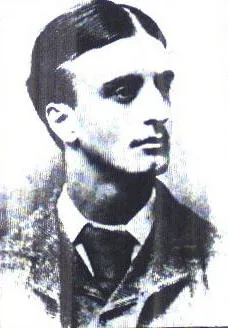
One of the more farfetched suspects was a man by the name of Aaron Kominski, pictured below, who was also named in 1889. Kominski was well known as a lunatic; he was described as delusional, because he claimed a higher power controlled his actions. Police officers at the time believed him to be violent as well as having a hatred of women. In 1894 Kominski was deemed non-homicidal or violent while committed in an asylum. The only evidence linking him to the Jack the Ripper murders was as an eye witness, who refused to testify so no charges were brought to him. Next in the suspect list was a man comparably as disturbed as Kominski, not only was this man a foreigner, but also a surgeon.
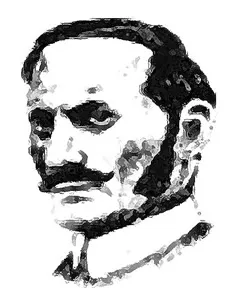 In 1903 Severin Klowski, pictured below, also known as George Chapman, was named as a suspect. He was a trained physician with violent tendencies. He attempted to harm his first wife with a knife. He was also known to have taken the lives of his three wives by poison, but the means of these murders do not match the methodology of the Ripper murders. He arrived in London in 1888 from Poland and moved to America in 1891. The timing if the arrival and departure of Klowski fit the time window of the crimes, yet the methods of murder differ to much from physical to impersonal. The next suspect is a favorite among many Ripper enthusiasts, even to this day.
In 1903 Severin Klowski, pictured below, also known as George Chapman, was named as a suspect. He was a trained physician with violent tendencies. He attempted to harm his first wife with a knife. He was also known to have taken the lives of his three wives by poison, but the means of these murders do not match the methodology of the Ripper murders. He arrived in London in 1888 from Poland and moved to America in 1891. The timing if the arrival and departure of Klowski fit the time window of the crimes, yet the methods of murder differ to much from physical to impersonal. The next suspect is a favorite among many Ripper enthusiasts, even to this day.
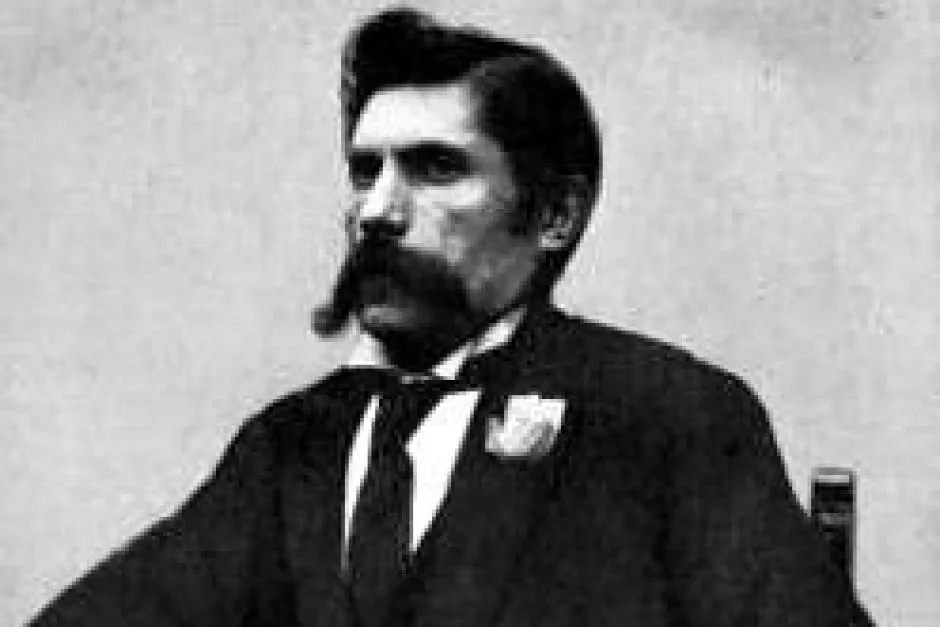
Dr. Francis Tumblety, pictured below, an American doctor living in London who was arrested in November 1888 for indecency. When arrested, Tumblety was charged with suspicion of the murders. Tumblety made bail on the November 16th and had a hearing on the 20th where his trial was postponed until December 10th. During this time, he fled to France and then traveled by boat to New York City. Once he was found in New York he was placed under surveillance, the New York police chief was unable to make an arrest due to lack of evidence and thus Tumblety was not extraditable. With all of these suspects lack of evidence, and witnesses coming forward and to frighten to testify the Ripper was never caught, but the messages he wrote still fuel the search for his true identity.
 The fact remains that case of Jack the Ripped is still unsolved. The man himself is gone but, his legend will never die. The Hollywood of these events will perpetuate the interest of this case, but the facts cannot be forgotten or embellished. Generation after generation will try a piece the puzzle together, but with the lack of evidence that remains today the mystery will more than likely never be solved. With the handicap of Victorian Police, only being able to convict a man caught in the act or by confession, this was a case impossible for the era to be able to solve. Along with no real evidence to go on then and now, a monster was free to walk the streets.
I do not own the any of the above images.
The fact remains that case of Jack the Ripped is still unsolved. The man himself is gone but, his legend will never die. The Hollywood of these events will perpetuate the interest of this case, but the facts cannot be forgotten or embellished. Generation after generation will try a piece the puzzle together, but with the lack of evidence that remains today the mystery will more than likely never be solved. With the handicap of Victorian Police, only being able to convict a man caught in the act or by confession, this was a case impossible for the era to be able to solve. Along with no real evidence to go on then and now, a monster was free to walk the streets.
I do not own the any of the above images.












